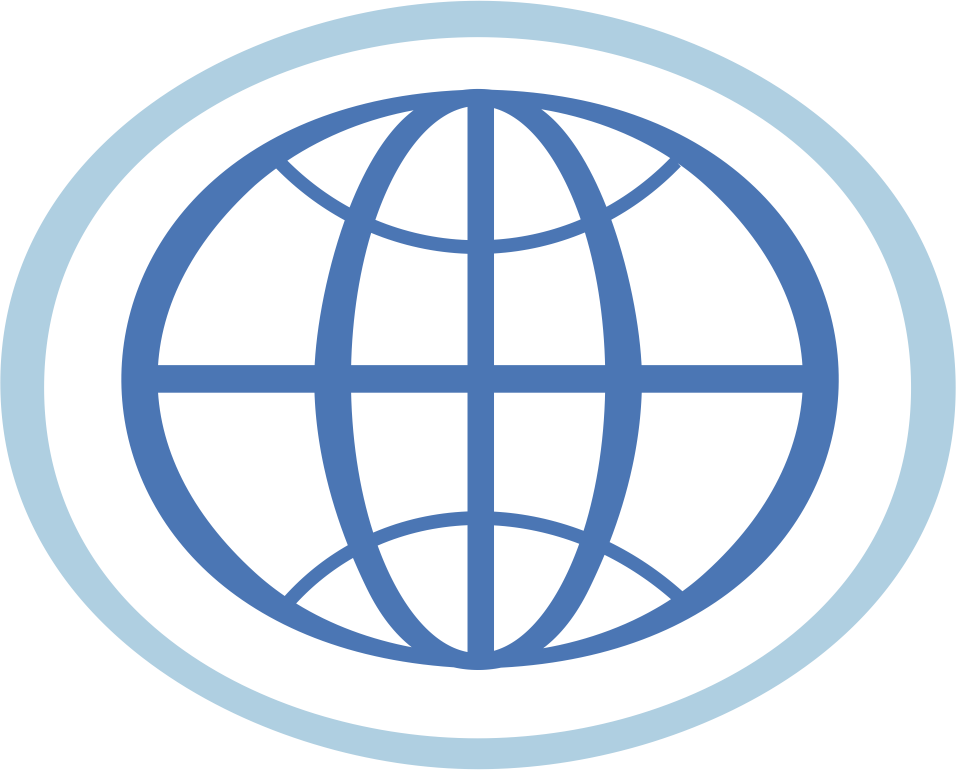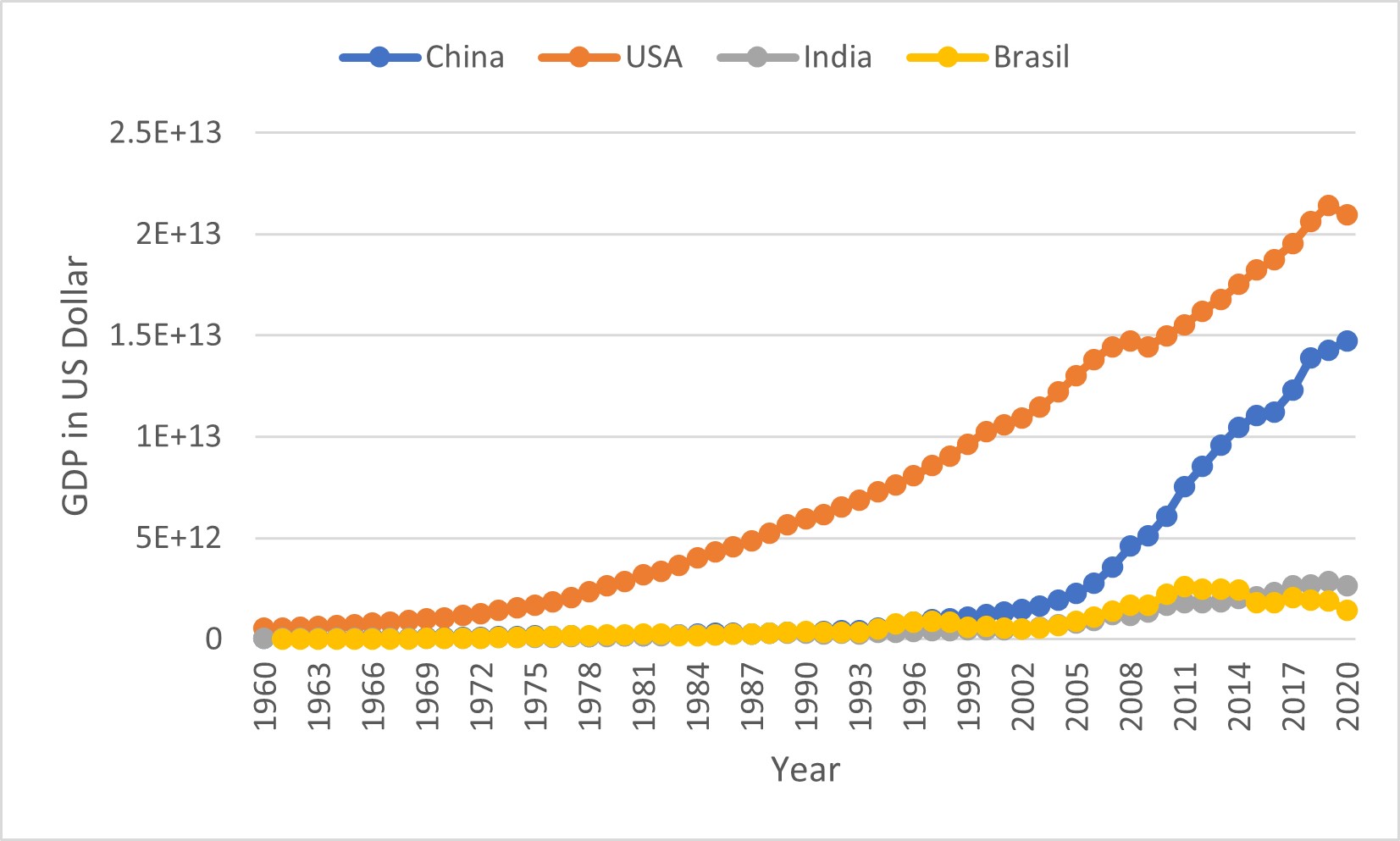

To understand the present situation in international relations it is necessary to analyze the changes
for its dominating economic and military powers - the USA, China, and Russia.
The changes in global trading patterns and economic relations in the last 10 to 20 years reveal a strong
growth in the economic market power and global trading relations of China [1][2]. A development which led
to the present trade war between the USA and China. In the last 30 years, after the breakdown of the
Soviet Union, the USA was the sole political, military, economic, and scientific leader of the world, from
the end of World War II it was already the strongest economic power. The developments in China are now
challenging this position. The important question is whether this will lead to a bi-polar or multi-polar
world order. In the first case, a bi-polar world confronting the USA and China, we can expect serious
issues in international relations. The second case, a multi-polar world with several independent powers,
may be much more positive for international relations.
There are multiple factors which determine the international influence of states. The influence always
depends on their importance for large groups of other countries. This importance is usually determined by
multiple factors like economic market power, (i.e. importance as a market to which other countries can sell
their products and services or from which they can buy raw materials, components, complete products, and
services), geographies in which the country controls important access points to trade routes (e.g., the
Suez or Panama Canal, the Bosporus), historical connections between countries (e.g., the British
Commonwealth), and military associations like NATO. In this article we will concentrate on the economic
and trade aspects. These aspects of course may also depend on geographic facts like access to trade routes.

Now there are many signs that the changes in international relations and economic importance
are not mirrored in the present organizations of the world.
The first example is the United Nations (UNO). In June 2022 there were 193 member countries. These include
Nauru (10,000 inhabitants), San Marino (30,000 inhabitants), Liechtenstein and Monaco (40,000 inhabitants each).
But also China (1.7 billion inhabitants) and India (1.7 billion inhabitants). In the General Assembly, each
member country has one vote, regardless of the number of people represented by that country. In 2022, the European
Union has 27 member countries, all of which are members of the UN. That means the EU has 27 votes representing
477 million people. However, China and India with a total of 3.4 billion inhabitants have only 2 votes together. The
UN Security Council has 15 members, 5 of which are permanent members with veto powers: China, USA, Russia, France and
Great Britain. All were winners of World War II (China through the Sino-Japanes war) and founding members of the UNO
in 1945. The other 10 members of the security council are each elected for 2 years.
The second example is the so-called G7 group.
This informal group is used to discuss many important economic and financial aspects between all the countries
of the world and it prepares many economic and political decisions by its members. The table below shows the
list of the countries ranked according to their GDP values. 7 of the 9 countries listed are members of the
G7 group, but China, ranked as number 2, and India, ranked as number 6, are not. But France, Italy, and Canada,
all with lower GDPs as India are G7 members.
The total of all G7 members represent less than 10% of the world population and Japan is the only asian
country in the group. There are no countries from Africa or South America. On the other hand, just the 5 largest
countries from Asia, Africa, and South America together - China, India, Russia, Brasil and South Africa
(the BRICS group) - represent more than 40% of the world population. The BRICS group was officially founded in 2006.
| Country | GDP 2020 (% of world GP) | GDP Ranking | Population 2018 (% of world) | G7 member |
|---|---|---|---|---|
| USA | 24.7 | 1 | 4.14 | Yes |
| China | 17.4 | 2 | 17.78 | NO |
| Japan | 6.0 | 3 | 1.60 | Yes |
| Germany | 4.5 | 4 | 1.05 | Yes |
| United Kingdom | 3.2 | 5 | 0.84 | Yes |
| India | 3.1 | 6 | 17.14 | NO |
| France | 3.1 | 7 | 0.85 | Yes |
| Italy | 2.2 | 8 | 0.77 | Yes |
| Canada | 1.9 | 9 | 0.77 | Yes |
After analyzing the background of the trade war between the USA and China, we must look into the relations of
both countries to Russia to understand the present global situation.
Economically Russia is no threat to the USA. However it disturbs USA ambitions and political goals in two ways.
Firstly, dependance of a large number of European Union countries on energy deliveries from Russia. Secondly, Russia's
military development and activities disturb USA activities. Russia is extensively modernizing its military systems,
especially its nuclear triad of sea- land- and air-based missiles[11]. One goal of the military development of
Russia is to guaranty that the Russian system still can completely destroy any attacking enemy, even if a large part
of its military systems would be eliminated in a surprise attack. To achieve this its triad of sea-, land-, and
air-based missiles is heavily automatized. The non-nuclear parts of Russia’s modernized military were already used
successfully to prohibit success of USA military plans in the middle east[12]. In addition, already in 2019 there were
joint military maneuvers with China[13]. However, the USA still follows its
worldwide expansion strategy as described and developed by Zbigniew Brzezinski (1966-1968 counselor to US President
Lyndon B. Johnson and 1977-1981 security advisor to US President Jimmy Carter) in his book "The grand chessboard:
American Primacy and its geostrategic imperatives". But, the US leadership claim in Brzezinski's strategy is based
on the requirement of a clear and visible global leadership role in the military, economy, trade and technology. However,
such a clear leadership role no longer exists. So, of course, this strategy is anathema to China and Russia, and may be unacceptable
to many other countries as well. Therefore, the current escalation is not a war by Russia against everyone, but a struggle
for US supremacy in the world. This is also clear from a recent interview with Henry Kissinger (former Secretary of State
and former US National Security Advisor)[14]. In it he makes three important points. Firstly, the aspects and problems of the
"divide and conquer" strategy of the USA, against the current cooperation between China and Russia, secondly, that the
interests and supremacy of the USA are clearly at stake here, and thirdly, the danger of the new weapons that surpasses
anything previously imagined.
In this context, the study by the New York investment manager Ray Dalio becomes interesting[15]. He examined the
reasons for unexpected stock market crashes and found that these unexpected events happened before but were unexpected
because they repeated on a time scale larger than that of a human life. Only by studying longer time scales in history he
could understand them. He found multiple cycles with different time scales. The cycle with the largest time scale
describes the rise and fall of empires, which of course leads to changes in the world order. I do not want to go into the details
of his findings, you can look them up yourself [16][17]. There are only two points I want to mention - he predicts,
that we are now at the change from the American empire to the Chinese one, and he finds that such changes are often
associated with times of great international conflicts.
A new report from the "Bennett Institute for Public Policy" at the University of Cambridge (UK) [18-20] shows
a division in the world that has clearly deepened. The version in [19] clearly points out that the group with a strong
inclination towards the USA comprises around 1.2 billion people (16% of total), while the opposite group comprises around
6.3 billion people (84% of total). The pro-USA group corresponds to the so-called economically developed, rich countries, the opposite group to
the poorer developing countries.
If we look at all these aspects together, the current situation can easily escalate into a third world war.
© Clauberg R., 2022-2023

This work is licensed under a Creative Commons Attribution 4.0 International License.